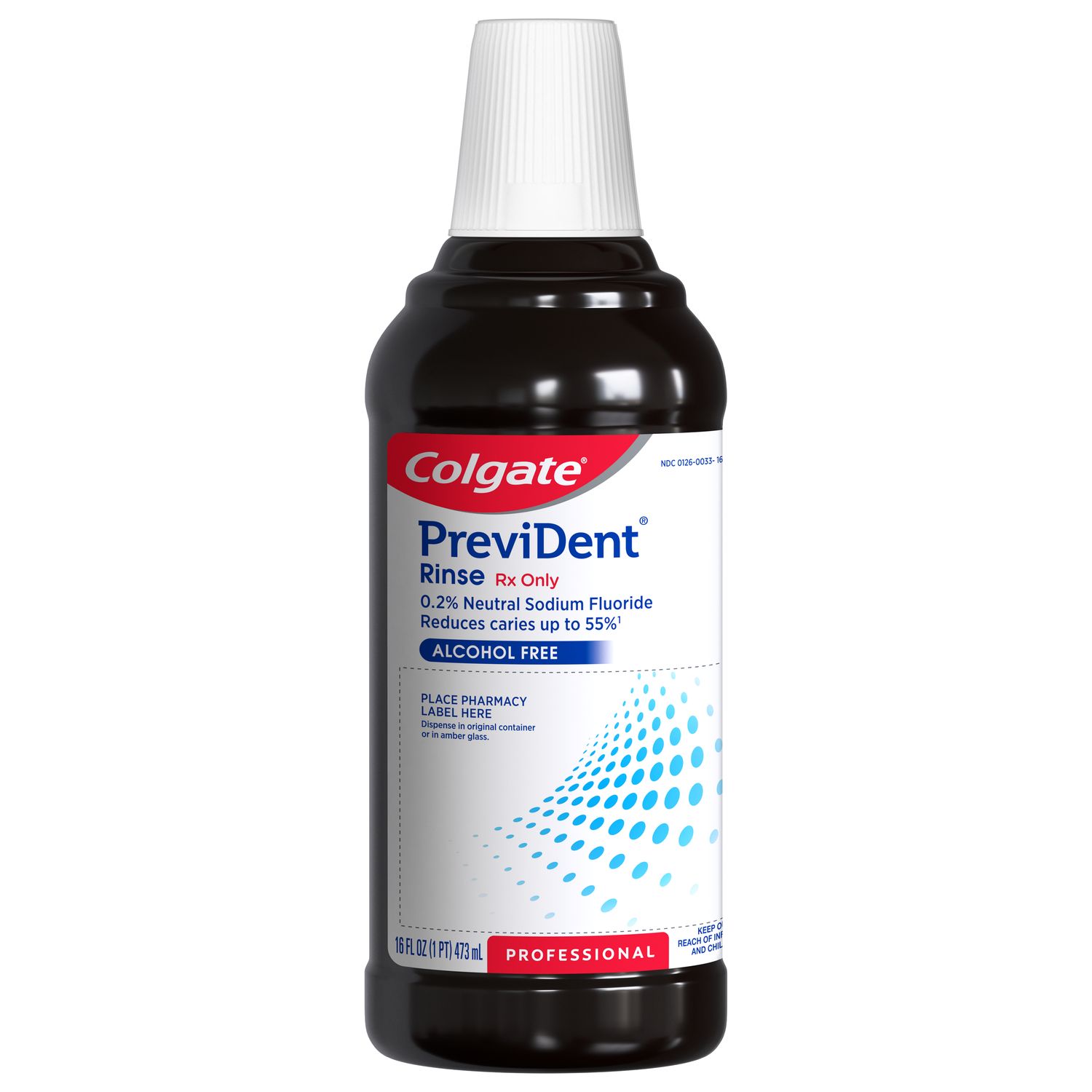-
-

FLUORIDE
What Is Stannous Fluoride Toothpaste?Discover what is Stannous Fluoride Toothpaste and its importance to prevent cavities and other oral health problems.

TEETH WHITENING
Whitening toothpaste - hydrogen peroxide vs. carbamide peroxideIf you lose one or more of your front teeth due to injury or decay, you may feel ...
-
Science & InnovationOral Health Commitment
- Oral Health Commitment
- Bright Smiles, Bright Futures
- Educational Resources
- Mobile Dental Van
- Volunteer
- ORAL HEALTH CHECK
- PRODUCT MATCH

Colgate Prevident
Colgate® PreviDent® Rinse (0.2% Neutral Sodium Fluoride), Mint






Colgate Prevident
Colgate® PreviDent® Rinse (0.2% Neutral Sodium Fluoride), Mint
Benefits
Colgate® PreviDent® Rinse is a great-tasting fluoride rinse proven effective for caries control. Containing the highest fluoride concentration for home use, this rinse provides full mouth coverage that’s safe for restorations. The convenient dose cap makes PreviDent® Rinse an easy, repeatable part of a patient’s weekly dental routine.
Product Characteristics
- Provides up to 55 % reduction in caries with weekly use
- Easy-to-use dose cap
1. Driscoll WS, et al. Caries-preventive effects on school children daily and weekly fluoride mouthrinsing in a fluoridated community: final results after 30 months. JADA. 1982;105:1010-1013.
2. Ripa, L W et al. “Supervised weekly rinsing with a 0.2 percent neutral NaF solution: final results of a demonstration program after six school years.” Journal of public health dentistry vol. 43,1 (1983): 53-62.



Related Products
Discover your smile’s perfect match
Explore our wide range of oral health solutions tailored to meet your smile goals. Use our tool and find your perfect match!









